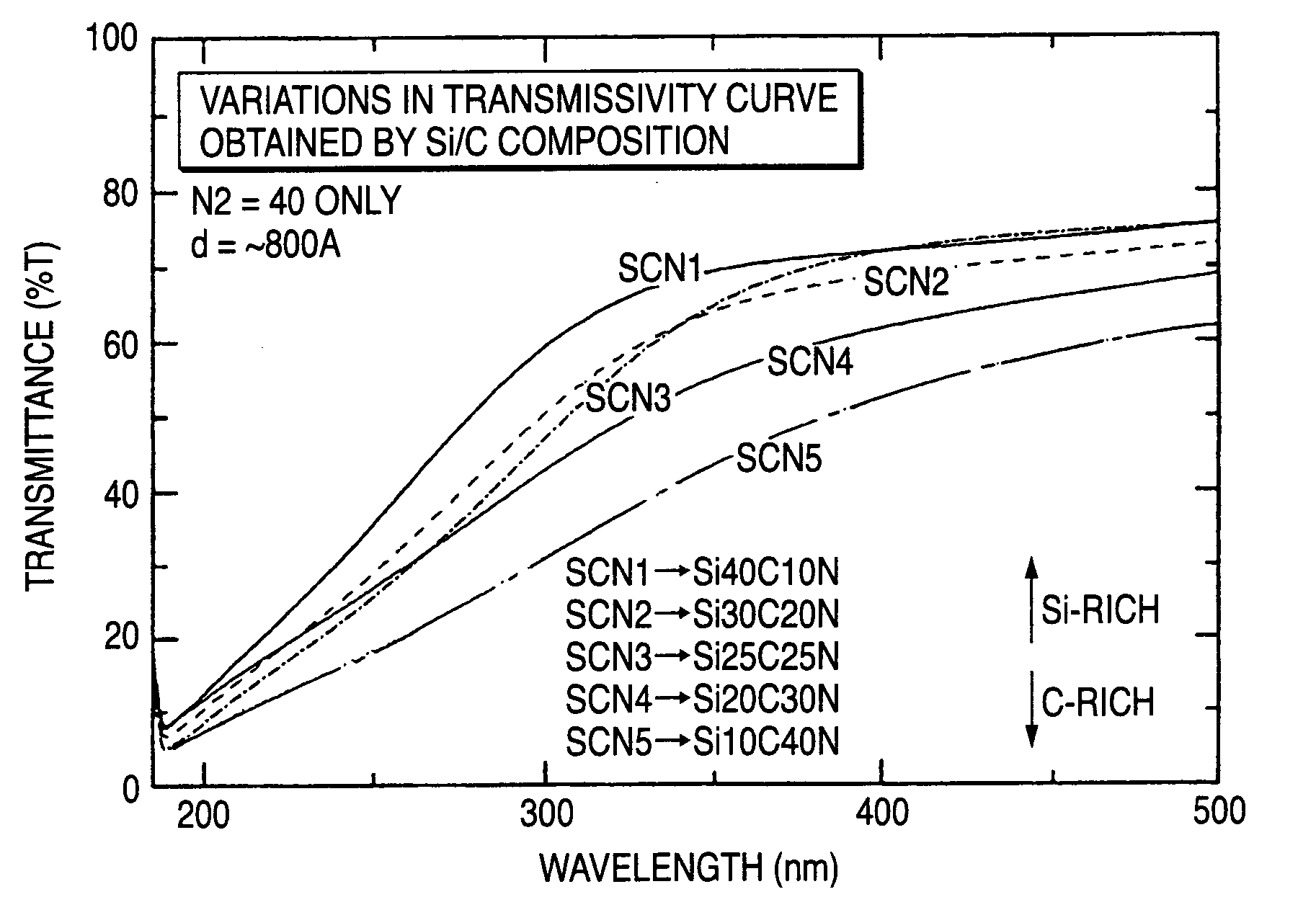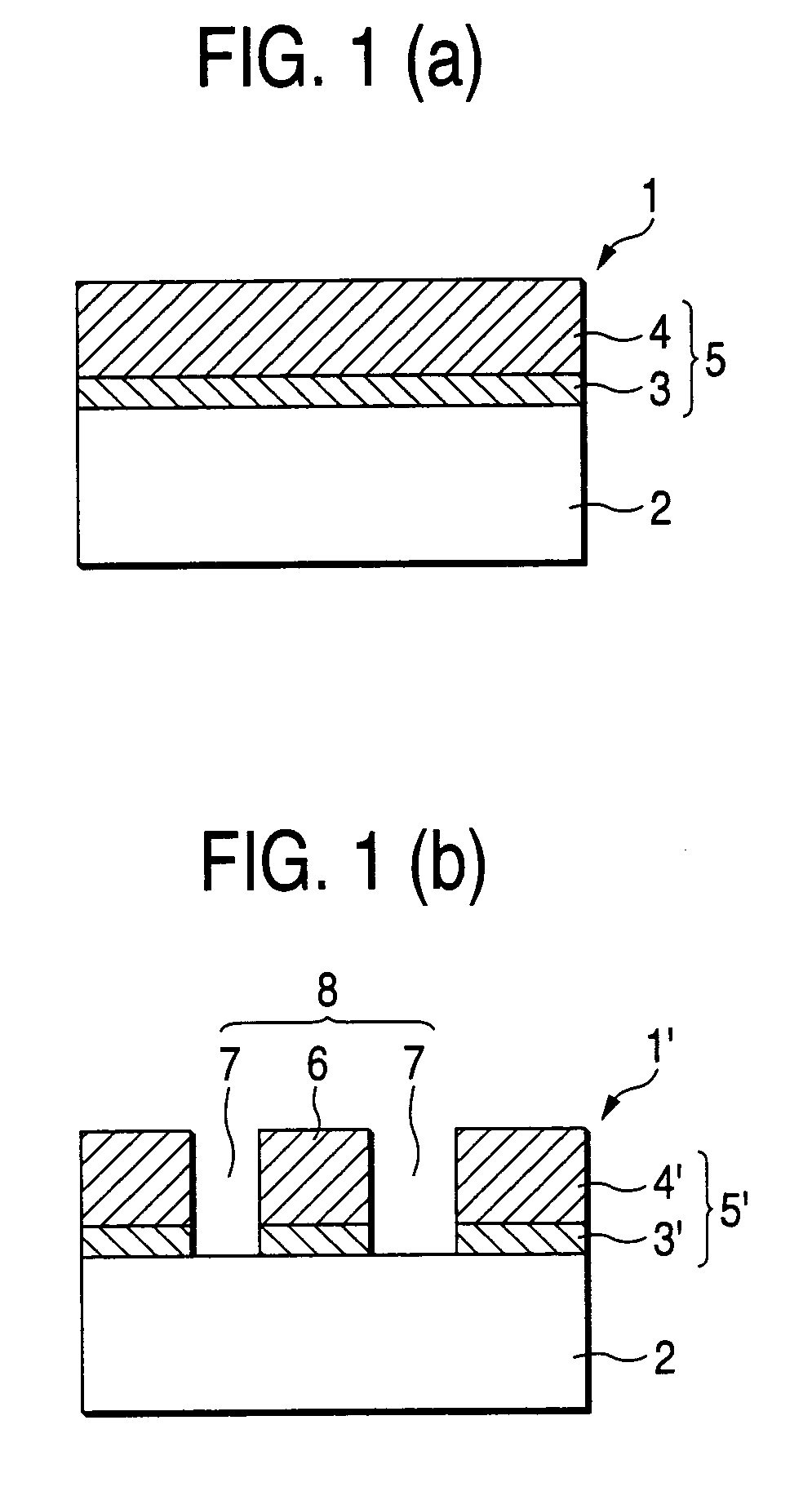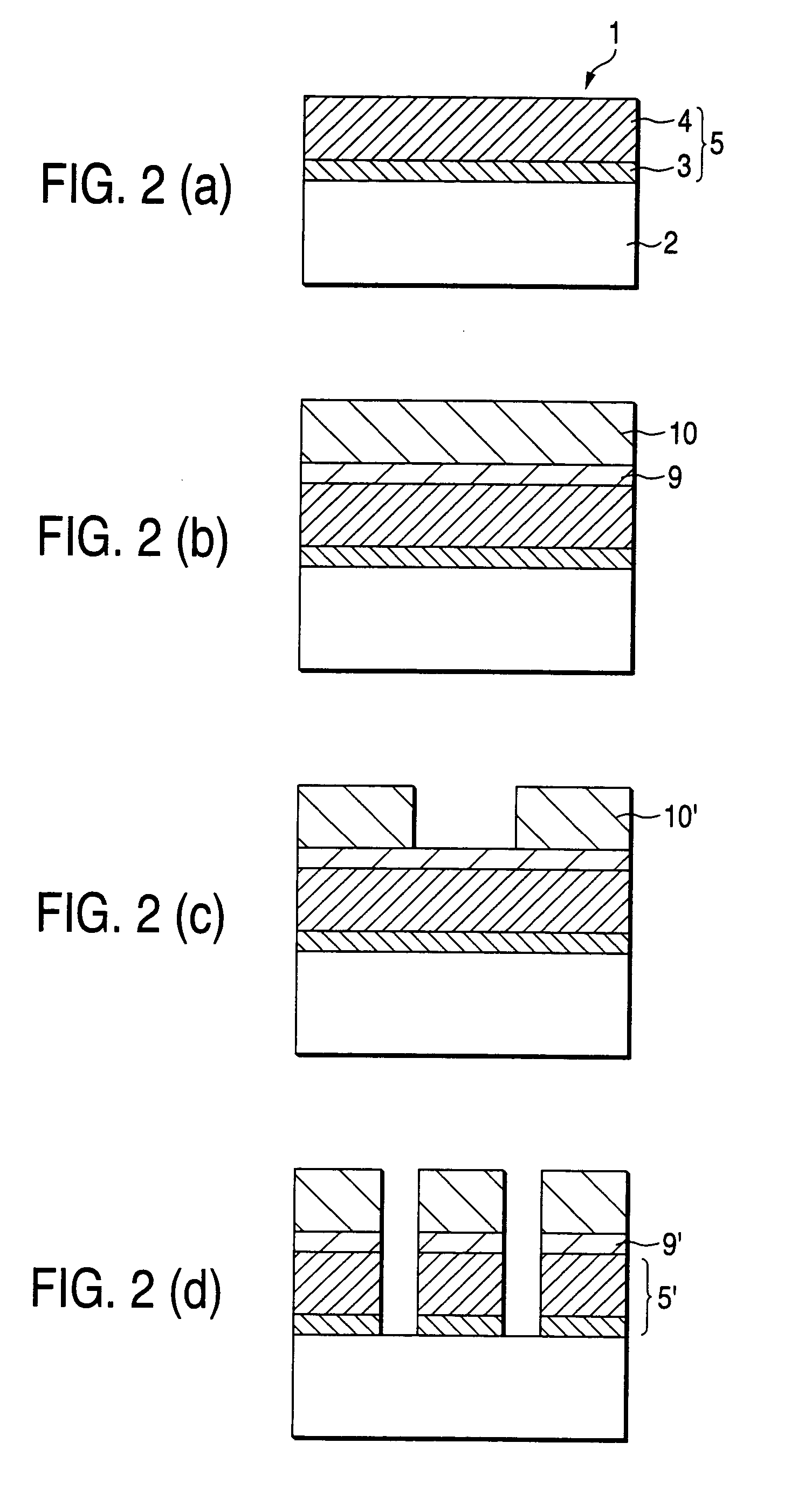Halftone-type phase-shift mask blank, and halftone-type phase-shift mask
a phase shift mask and halftone technology, applied in the field of halftone-type phase shift mask blanks and halftone-type phase shift masks, can solve the problems of reducing the depth of focus, increasing the burden of designing an optical system including a lens, and reducing the safety of processes, so as to achieve high-accurate cd (critical dimension) control
- Summary
- Abstract
- Description
- Claims
- Application Information
AI Technical Summary
Benefits of technology
Problems solved by technology
Method used
Image
Examples
third embodiment
(Third Embodiment)
[0140]The invention provides a method of manufacturing a mask corresponding to F2 excimer laser exposure light from among the halftone phase-shift masks of the invention.
[0141]A Ta—Hf film is grown to a thickness of 35 angstroms on a fluorine-doped quartz substrate (a CaF2 substrate is also available) through use of a Ta—Hf alloy target [Ta:Hf=9:1 (atomic ratio)] while Ar is taken as a sputtering gas. Next, an SiON film is grown to a thickness of 780 angstroms through use of an Si target and by taking Ar, O2, N2 as sputtering gases and regulating the flow rate of the gases such that a refractive index “n” of 2.0 and an extinction coefficient “k” of 0.25 are achieved at a wavelength of 157 nm. Finally, a Ta film is grown to a thickness of 35 angstroms through use of a Ta target and by taking Ar as a sputtering gas, thereby producing a phase shifter film.
[0142]FIG. 8 shows transmission and reflection spectra of the phase shifter film formed through the foregoing film...
fourth embodiment
(Fourth Embodiment)
[0150]The invention provides a method of manufacturing a mask corresponding to ArF excimer laser exposure light from among the halftone phase-shift masks of the invention.
[0151]A Ta—Hf film is grown to a thickness of 35 angstroms on a synthetic quartz substrate through use of a Ta—Hf alloy target, which is the same as that employed in the third embodiment, while Ar is taken as a sputtering gas. Next, an SiON film is grown to a thickness of 840 angstroms through use of a Si target and by taking Ar, O2, N2 as sputtering gases and regulating the flow rate of the gases such that a refractive index “n” of 2.1 and an extinction coefficient “k” of 0.12 are achieved at a wavelength of 157 nm. Finally, a Ta film is grown to a thickness of 30 angstroms through use of a Ta target and by taking Ar as a sputtering gas, thereby producing a phase shifter film.
[0152]FIG. 10 shows transmission and reflection spectra of the phase shifter film formed through the foregoing film growt...
fifth embodiment
(Fifth Embodiment)
[0155]The invention provides a method of manufacturing a mask corresponding to ArF excimer laser exposure light from among the halftone phase-shift masks of the invention.
[0156]A Ta—Hf film is grown to a thickness of 35 angstroms on a synthetic quartz substrate through use of a Ta—Hf alloy target while Ar, O2, N2 are taken as sputtering gases. Next, an MoSiON film is grown to a thickness of 900 angstroms through use of an MoSi target [Mo:Si=8:92 (atomic ratio)] and by taking Ar, O2, N2 as sputtering gases and regulating the flow rate of the gases such that a refractive index “n” of 2.04 and an extinction coefficient “k” of 0.29 are achieved at a wavelength of 193 nm. Through ESCA analysis, the composition of the MoSiON film obtained at this time is determined as 4.6 atm. % Mo, 29.9 atm. % Si, 39.5% O, and 26.0% N.
[0157]FIG. 11 shows transmission and reflection spectra of the phase shifter film formed through the foregoing film growth method. Variations in reflectiv...
PUM
| Property | Measurement | Unit |
|---|---|---|
| thickness | aaaaa | aaaaa |
| surface reflectivity | aaaaa | aaaaa |
| wavelength range | aaaaa | aaaaa |
Abstract
Description
Claims
Application Information
 Login to View More
Login to View More - R&D
- Intellectual Property
- Life Sciences
- Materials
- Tech Scout
- Unparalleled Data Quality
- Higher Quality Content
- 60% Fewer Hallucinations
Browse by: Latest US Patents, China's latest patents, Technical Efficacy Thesaurus, Application Domain, Technology Topic, Popular Technical Reports.
© 2025 PatSnap. All rights reserved.Legal|Privacy policy|Modern Slavery Act Transparency Statement|Sitemap|About US| Contact US: help@patsnap.com



